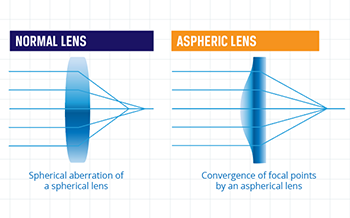A New Type of Lens to Slow Down Myopic Progression
- Insight uOttawa
- Mar 10, 2021
- 3 min read
Updated: Oct 8, 2021
Myopia, or nearsightedness, is a fairly common condition that allows people to focus on objects that are very close to them, but are unable to clearly see objects in the distance. The light rays that normally refract onto the back of the eye to produce an image are unable to do so in people with myopia. The focal point of the light rays is unable to hit the retina to produce a clear image, which is due to the elongation of the eye.

Figure 1: https://www.britannica.com/science/myopia
Wearing eyeglasses or contact lens is a fairly easy fix to this problem, as the lens in the glasses helps to bend the light properly to allow the focal point to hit the back of the retina. Aside from the standard glasses that you can get from the optometrist, there is a new type of lens that can supposedly help slow the progression of myopia in children. The StellestTM lens by Essilor shows promising signs towards helping to prevent myopia from becoming worse in children. An ongoing 3 year long clinical trial with 167 children was started in 2018 in an attempt to prove that this new technology is beneficial. After just 1 year of the trial, eye elongation was prevented in 28% of the participants wearing the StellestTM lens. Those participants with normal, single vision glasses all continued to experience eye elongation, which means their vision would continue to worsen throughout their life. There was also a 60% slow down in the progression of myopia in those children who wore the StellestTM lens compared to normal single vision glasses. This information is amazing and extremely important since myopia can help lead to a long list of different ocular diseases and conditions, such as macular degeneration, retinal detachment or glaucoma

Figure 2: https://www.prnasia.com/story/297512-1.shtml
The technology that is used in the StellestTM lens is called the Highly Aspherical Lenslet Target (H.A.L.T) technology. The Stellest TM lens consists of 11 rings of aspherical lenslets that help to focus light onto the same place of the retina everytime. Normal spherical lenses follow the curvature of a sphere and have a consistent radius all the way around, whereas aspherical lens, like the name suggests, follows an aspherical curvature that is unlike a spherical lens. The curvature of aspherical lenses in nature are able to manipulate light rays so they are more directly focused at one spot on the retina, producing sharper images for people with myopia. Normal spherical lenses do still help to focus light rays, as seen in figure 4, but are less precise and effective when compared to the results of aspherical lenses.
Figure 3 and 4: https://escooptics.com/blogs/news/concepts-in-light-and-optics-lenses-part-4-aspheres
Although there is still much to be learned and discovered, the possibility of reducing the number and the severity of children and young adults with myopia would be great for future generations. These lenses may not completely cure patients of myopia, but it can help prevent the worsening of people’s vision and can help reduce the possibility of other ocular conditions.
References
“Concepts in Light and Optics: Aspheres - Part 4.” Esco Optics, Inc., Nov 21, 2017
escooptics.com/blogs/news/concepts-in-light-and-optics-lenses-part-4-aspheres.
“Essilor's Game-Changing StellestTM Lens Shown to Slow down Myopia Progression in
Children by More than 60%, after One-Year Interim Clinical Trial.” Essilor Group, 28
lens-shown-to-slow- down-myopia-progression-in-children-by-more-than-60-after-one-
year-interim-clinical-trial/.
Powell, Selina. “Myopia: Essilor Spectacles Slow Progression by 60%.” Association of
Optometrists (AOP) - Homepage, 1 Oct, 2020.
slow-pro gression-by-60.
“What Are the Long-Term Risks of Myopia in Children?” MyMyopia, 24 Nov. 2020,
mymyopia.com/what-are-the-long-term-risks-of-myopia-in-children/.









Comments